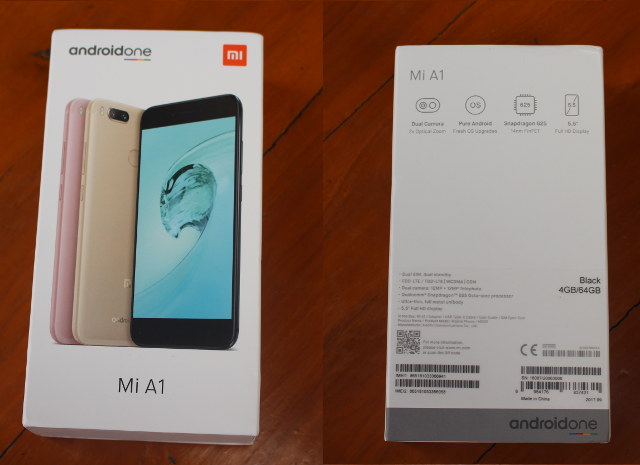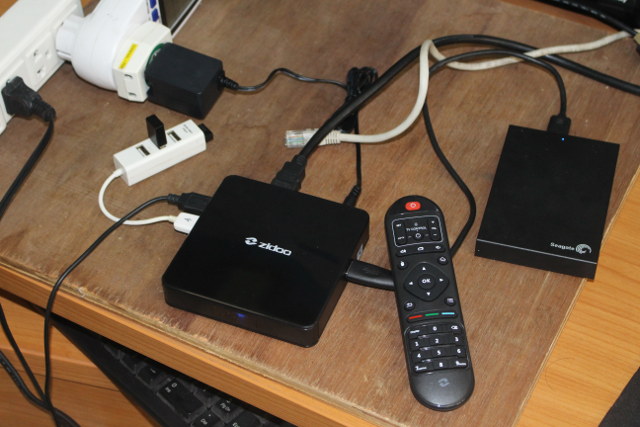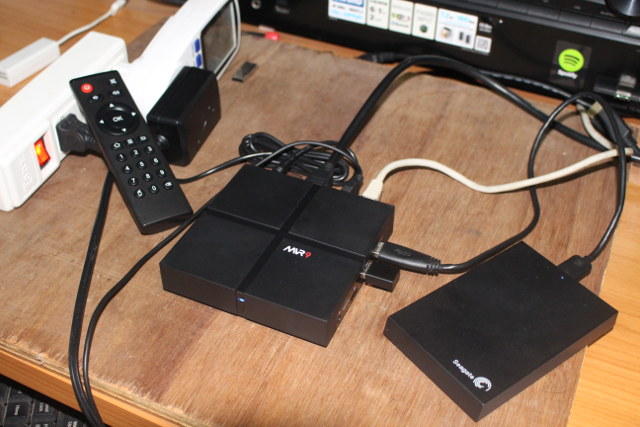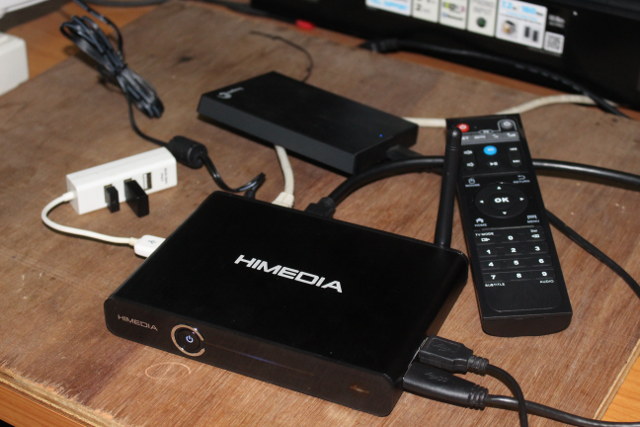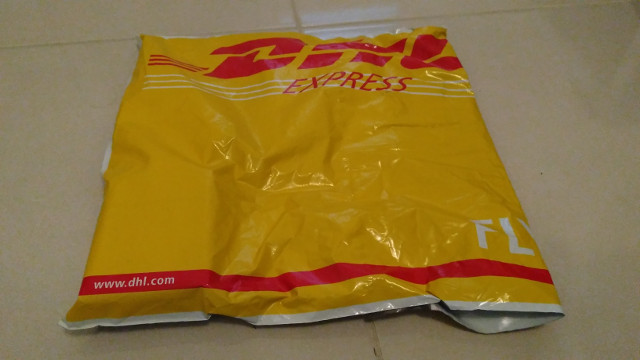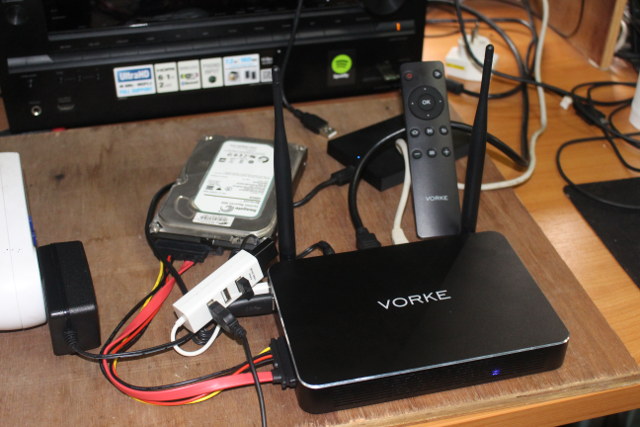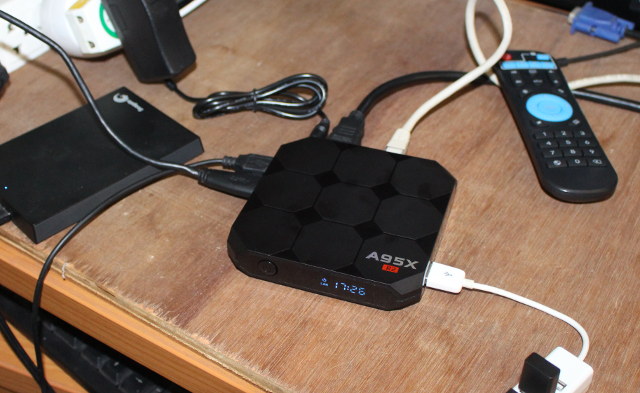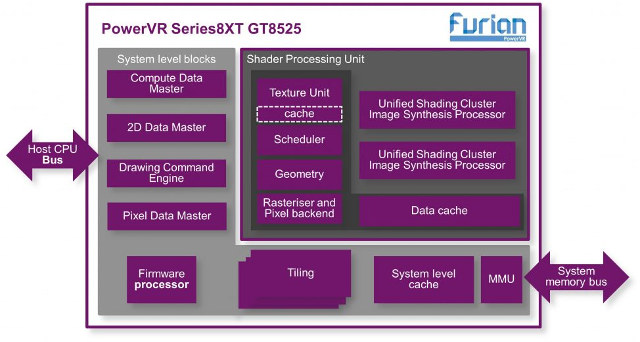Xiaomi Mi A1 hardware specifications are pretty much standard for a mid-range smartphone, except possibly for its dual rear camera, and what makes it stand apart is really Android One program that promises regular firmware update, including to the latest “pure” Android version, during a 2-year period from launch. In my case, the phone is also interesting because so far I had only used smartphones with Mediatek SoCs, and Mi A1 is equipped with a Qualcomm Snapdragon 625 processor. SD625 should be slower than the Mediatek Helio X20 deca-core processor I’ve been using in Vernee Apollo Lite, but I’m curious to find out if some apps have been better optimized for Qualcomm processors. I’ll soon find out as GearBest sent me a review sample.I’ll start with an unboxing and first boot post, before writing the second part of the review in a couple of weeks once I’ve finished testing the […]
Zidoo X7 Review – Part 2: Android 7.1 Firmware, ZDMC, WiFi, and More
Zidoo X7 is an Android TV box powered by Rockchip RK3328 processor similar to Bqeel MVR9 with 2GB RAM, but instead of provide Gigabit Ethernet, and 802.11 b/g/n WiFi, it comes with Fast Ethernet, and 802.11 b/g/n/ac WiFi, so is better suited to people using WiFi instead of Ethernet for media streaming. You’ll find plenty of photos in the first part of the review entitled “Zidoo X7 TV Box Review – Part 1: Unboxing & Teardown“, and I’ll report my experience with Android 7.1.2 firmware in this second part. First Boot, Setup, and First Impressions I connected two RF dongles for MINIX NEO A2 Lite air mouse and Tronsmart Mars G01 gamepad via a USB hub, a USB keyboard to take screenshot, and a Seagate USB 3.0 hard drive to the single USB 3.0 port on the box. I perform tests with Ethernet in most reviews, but with Zidoo X7, […]
Bqeel MVR9 (NT-N9) TV Box Review – Part 2: Android Nougat Firmware, RKMC, YouTube 4K, and More
Bqeel MVR9 is another TV box powered by Rockchip RK3328, but that model comes with Gigabit Ethernet and 2GB RAM contrary to the cheaper A95X R2 TV box I previously reviewed. If you want to check thsee some pictures read “Bqeel MVR9 TV Box Review – Part 1: Specifications, Unboxing and Teardown“, as in this second part I’ll focus on the firmware, and we’ll see if the claims of better 4K video playback thanks to DDR4, optimized RKMC with HD audio pass-through, YouTube 4K, and DRM support are true. First Boot, Setup, and First Impressions One good thing about Bqeel MVR9 is that it comes four 4 USB port, so I did not need to use a USB hub to connect my two RF dongles for MINIX NEO A2 Lite air mouse and Tronsmart Mars G01 gamepad, a Seagate USB 3.0 hard drive, and a USB keyboard I normally use […]
HiMedia Q30 TV Box Review – Part 2: Android 7.0 Nougat Firmware
HiMedia Q30 is an Android Nougat TV box powered by Hisilicon Hi3798MV200 processor, a cost-down version of Hi3798C V200 processor with the same CPU, a lower-end Mali-450MP GPU, about the same media capabilities, and less I/Os. I’ve taken pictures of the device and board if the first part of the review entitled “HiMedia Q30 (Hisilicon Hi3798MV200) Android TV Box Review – Part 1: Unboxing and Teardown“, so today, I’ll report about my experience with the device while running Android 7.0. First Boot, Setup, and First Impressions I’ve connected a USB 3.0 hard drive to the single USB 3.0 port, and filled the two other USB 2.0 ports with a USB keyboard, and a USB hub with two RF dongles for an air mouse and a gamepad. I added Ethernet, HDMI, and power cable to start the device. A typical boot takes around 25 seconds to the Android launcher below. That’s […]
Getting Started with MediaTek X20 Android Development Board
Thanks to CNX for helping me get a hand on the 96Boards compliant Mediatek X20 board that was generously donated by Seeed Studio. In this article, I will walk through the steps to get the board up and running and also compile Android from the source code. The current Android is version 6. Unboxing the Beast First Boot Up The board boots up from the eMMC, and the first time you boot up you will get Android screen as shown in Figure-9. This is the default Android image from the factory, which surprisingly looks like it was setup for a phone screen mode, which is not sufficient for a HDMI monitor. It would be better to install the images that are made available at Linaro website or build your own. See the other section to flash the board with different images. Switching to Fastboot Mode Flashing image files are done […]
Vorke Z3 Rockchip RK3399 TV Box Review – Part 2: Android 6.0 Firmware
Vorke Z3 is another mini PC / TV box powered by Rockchip RK3399 hexa core processor with two Cortex A72 cores, and two Cortex A53 cores making it theoretically one of the fastest TV boxes on the market, excluding NVIDIA Shield Android TV which is well ahead of the competition, albeit with poor worldwide availability. I’ve have already shown Vorke Z3 hardware inside out, so in the second part of the review, I’ll focus on testing the firmware including video playback, and the system performance, and see how it compares to the similar Yundoo Y8, which I reviewed last month. First Boot, Setup, and First Impressions One the selling point of Vorke Z3 is its SATA connector, so I connected a 1TB 3.5″ SATA drive first, as well as Seagate USB 3.0 drive (1TB) to the USB 3.0 port, I also added a USB hub to connect a USB keyboard, […]
A95X R2 TV Box Review – Part 2: Android 7.1, Video & Audio Tests, and Benchmarks
In the first part of A95X R2 Rockchip RK3328 TV box review, I listed the specifications of the device, took a few photos, and reported about the chip used in the PCBA. I’ve now had time to play with the box, so I can report about my experience with Android 7.1, video & audio capabilities, and the performance of the device in the second part of the review. First Boot, Setup, and First Impressions I connected a USB 3.0 hard drive to the USB 3.0 port of the box, a USB keyboard to one of the USB port to take screenshots, and a USB hub with the RF dongles for my air mouse and gamepad in the remaining USB 2.0 port. I completed the hardware setup with Ethernet and HDMI cables, as well as the power supply. I then pressed the power button on the unit to start it up, […]
Imagination PowerVR “Furian” Series8XT GT8525 GPU Targets High-end Smartphones, Virtual Reality and Automotive Products
Imagination Technologies has unveiled their first GPU based on PowerVR Furian architecture with Series8XT GT8525 GPU equipped with two clusters and designed for SoCs going to into products such as high-end smartphones and tablets, mid-range dedicated VR and AR devices, and mid- to high-end automotive infotainment and ADAS systems. The Furian architecture is said to allow for improvements in performance density, GPU efficiency, and system efficiency, features a new 32-wide ALU cluster design, and can be manufactured using sub-14nm (e.g. 7nm process once available). PowerVR GT8525 GPU supports compute APIs such as OpenCL 2.0, Vulkan 1.0 and OpenVX 1.1. Compared to the previous Series7XT GPU family, Series8XT GT8525 GPU delivers 80% higher fps in Trex benchmark, an extra 50% fps in GFXbench Manhattan benchmark, 50% higher fps in Antutu, doubles the fillrate throughput for GUI, and increases GFLOPs for compute applications by over 50%. GT8525 GPU is available for licensing […]


